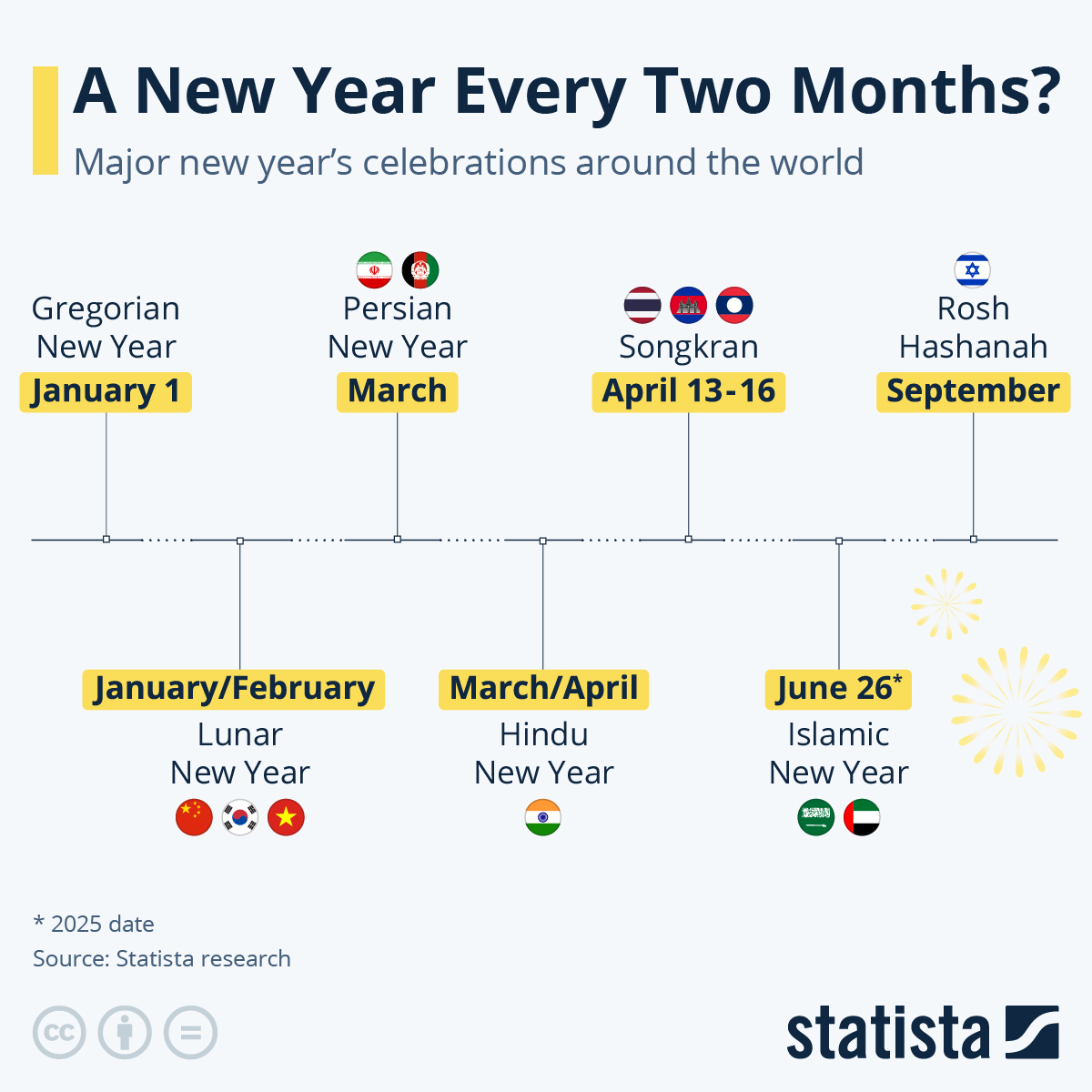Lunar New Year festivities, celebrated in China, Vietnam and South Korea among others, are ringing in a new year on February 10. In China, the event will start the year of the dragon. While January 1 is a also public holiday in the country, it is rather insignificant compared to the massive Chinese New Year’s celebration lasting seven days or even longer. The Chinese welcome two new years in short succession and, as our chart shows, a new year is celebrated almost every two months in some part of the world.
In July, Muslim countries rang in a new year on the Islamic calendar. 1445 AH will last from July 19, 2023, to approximately July 5, 2024 – 14 days shorter than the 366 days of the Gregorian year. The date set by Saudi Arabia is based on astronomical calculations of moon cycles and while many countries in the region follow the Saudis’ lead, others wait until they can spot the new moon themselves, causing slightly different observation dates for the holiday.
Like the Islamic New Year, many regional new year’s celebrations rely on lunar calendars, causing their dates to vary each year in relation to the Gregorian calendar, which is based on one revolution of the Earth around the sun. Because the Islamic year is the only one which is significantly shorter than the solar year, the Islamic celebration is also the only one which can occur in any month of the Gregorian calendar.
Saudi Arabia until recently condemned new year’s celebrations on January 1 and only allowed fireworks to take place on the date for the first time in 2021. January 1 celebrations have also caused debate in Uzbekistan, where the Persian New Year Nowruz is celebrated in March and traditionally minded Uzbeks would like to see January 1 celebrations – a Soviet legacy – disappear. Nowruz is considered the main new year’s celebration – and main festival of the year - in Iran and Afghanistan, while it is celebrated as “Spring Festival” in much of Central Asia.
In Southeast Asia, January 1 and regional celebration Songkran coexists peacefully. Its date used to be determined by the lunar Hindu calendar, but has since received set Gregorian dates varying slightly by country for convenience’s sake. In India, the Hindu calendar’s new year is celebrated on various days in March and April depending on the region, while January 1 celebrations are also popular.





















